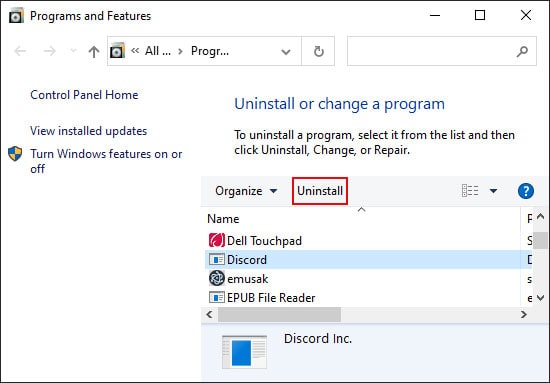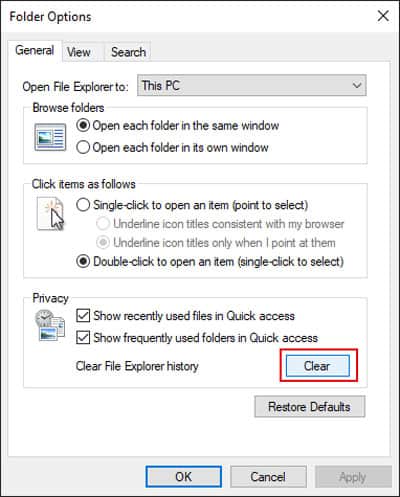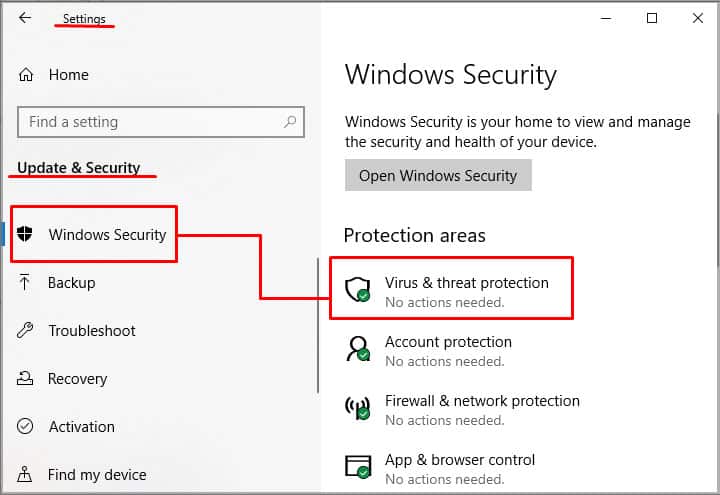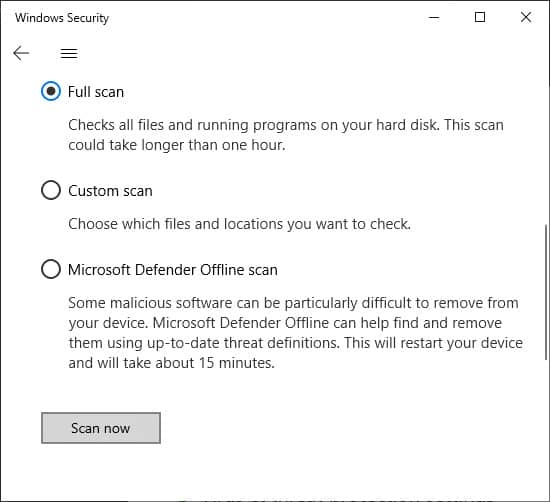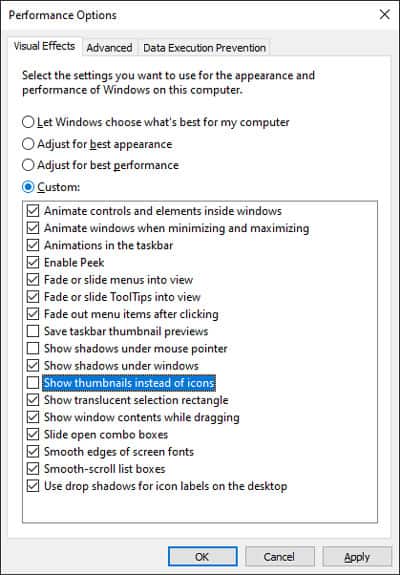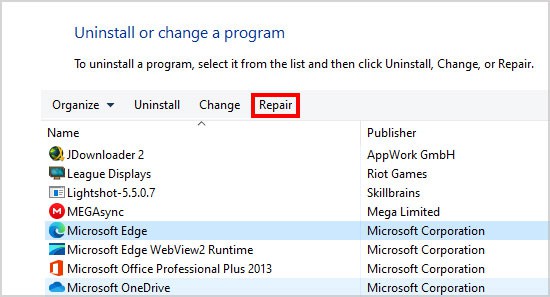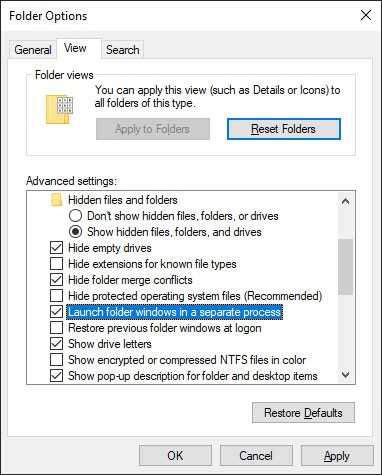Fortunately, it is relatively easy to resolve.You only need to execute a few simple tasks, which we have mentioned in detail.
Causes for File Explorer Not Responding
Fixes for File Explorer Not Responding
Below mentioned are some of the possible ways to resolve the unresponsive file explorer. Check the relevant sections if you were able to narrow down the cause. If not, follow all the methods in order.
Task overload.Unnecessary applications running in the background.Issues with Graphics Driver.Lack of sufficient space on the system drive.Insufficient RAM space.Corrupted system files.Malware infection.
Restart Windows Explorer
The quickest method you can use right off the bat is to restart Windows Explorer. This is the process which loads the file explorer, and restarting it will solve temporary bugs. To restart the process,You can also use the Command Prompt for this purpose. To do so,
Check External Devices
If there are issues with any connected external devices, your file explorer may get stuck. This case especially applies while connecting a faulty storage device or a mobile phone as the explorer keeps on trying to access the device.Unplug such devices and check if the error persists. If file explorer operates normally, the fault is related to the external device.
Run System Maintenance Troubleshooter
You can also try running the System Maintenance Troubleshooter to resolve some maintenance errors. It is known to resolve many errors related to the file explorer. Windows runs this troubleshooter regularly, but you can launch it manually by following the steps below:
Manage Memory Resources
One of the main reasons for file explorer not responding is the lack of available memory. It can happen due to various reasons. Try out the methods below to manage your memory resources.
Close Unnecessary Background Processes
Background processes hog a lot of system memory. So, end them to free up the memory resources. Here’s how you can do so:
Clean and Organize Your Computer
Your system allocates some free space from your system drive as virtual memory if enough RAM is unavailable. So, if you have very little available space, the file explorer will stop responding due to insufficient memory resources.Clean and Optimize your storage space to avoid such issues. We also recommend uninstalling unnecessary applications from your PC. To do so:If you have low RAM or disk space, you should look into extending your Hard Disk or RAM.
Change Virtual Memory Settings
Some users may have set a small fixed size for the virtual memory paging file. In such cases, sufficient memory will not be available for many processes. To settle this,
Delete File Explorer History
Some users have found that having many items in the explorer history list caused the file explorer to cease responding. It especially happens when they launch This PC to open the Quick Access window.You can fix this issue by clearing the file explorer history. Here’s how you can do so:If you can’t open the file explorer, you can also use the Command Prompt to delete the files manually. To do so,
Scan for Malware
File explorer is one of the most used programs on a computer. Consequently, many malware programs that infect it is available on the internet. So, scan for malware whenever you encounter this error. Follow the instructions below to do so using the Virus & threat protection:
Uninstall File Explorer Add-ons and GUI Customization Tools
If you use third-party extensions and tools for file explorer, you’ll frequently run into this problem. Particularly, if you update/upgrade your OS after adding such tools, incompatibility issues may arise. So we recommend uninstalling any tools that manipulate your files.
Update Graphics Driver
The graphics driver is responsible for providing the interface for the file explorer. So issues with the driver are also a possible reason for this error. Keep your driver fully updated to prevent such problems.If you already have the latest version, try reinstalling it. Doing so will take care of any bugs in the driver software.
Perform Clean Boot
File explorer may stop responding as a result of interference by third-party applications. They might be launching many unnecessary processes that hog a lot of memory. Or there might be other issues involved.Regardless, first, boot your PC in safe mode. If your file explorer works properly, the problem is definitely third-party interference.Boot your PC in normal mode and perform a clean boot to narrow down responsible programs.Then, either uninstall those apps or configure their settings to stop launching relevant processes.
Disable Thumbnails
If your file explorer stops responding while opening particular folders, chances are there are many corrupted picture or video files in the directory. You can check whether this case applies to you by following the steps below:If you can’t launch the file explorer,If this solves the error, check for corrupted files and recover/delete them. If not, there’s no issue with your pictures or videos, so move on to subsequent steps.
Repair/Reinstall Applications
If your file explorer stops responding only when running certain applications and works fine otherwise, the application itself is problematic. In such cases, repair or reinstall the application using the steps below:If repairing doesn’t work, uninstall them. Then, install the latest versions from the official websites.
Run Memory Diagnostics
A faulty RAM is also a possible reason for insufficient memory space, thereby causing this error. You can check for RAM defects with the Windows Memory Diagnostics utility. Here are the steps to use this tool:Your PC will reboot and run this tool. After checking the memory, your computer will restart and show the test results. If the result doesn’t appear, you can check for it on the Event Viewer.If you get an error message, either the RAM or the motherboard slot may be defective. We recommend consult with a hardware specialist to repair or replace the faulty hardware.
Repair System Integrity
Corrupted system files are responsible for a horde of system issues, including this one. You must repair the integrity of your system to sort it out. Check out our article on How To Repair Corrupted Windows Files for more information.
Update or Rollback Windows
Windows regularly introduces new updates with new features. But some updates can have bugs that can cause this problem. So update your OS as soon as further updates are available. If you have the latest build, roll back to a previous build by uninstalling updates.
Perform In-place Repair
If you have been suffering from this issue for a long time and previous methods were useless, you need to perform an in-place repair. It will reinstall the OS over your previous installation without affecting other files.You need an installation software of Windows that matches your system’s current build and language to perform a repair. It’s best to use an ISO file, as malware or other software won’t be able to modify its contents. Here’s how you can use it to perform an in-place repair:
Use Alternate Methods to Explore Your Files
If your file explorer frequently stops responding, you can use some alternate methods as a workaround. Web Explorer:The easiest way to explore your files while using the GUI is to use web browsers. To do so,For instance, file:///E:/ loads the E drive. You’ll see a list of the folders and files in the directory, which you can browse.You’ll only be able to launch files that can open on your web browser itself with this method, such as pdfs, images, etc. For other files, the browser will start downloading them from your local drive to the download folder. You can run them from the download page, though.Command Prompt:If you are familiar with using the command prompt to navigate your local disk and open files, using this CLI might be easier for you. The basic command you can use are:
cd followed by file/folder path to open the file or change to the directory. cd.. to go back to the parent folder.dir to list the folder contents.
Launch Folder Windows in Separate Process
This is not exactly a solution. But if you don’t want this error to hamper all your activities, you should enable launching different folder windows in separate processes. This way, even if one file explorer window stops responding, you can run other windows.To enable this option,
Related Questions
Does a Cluttered Desktop Cause File Explorer Issues?
A cluttered desktop will not cause any errors with your system. However, it might be indicative to other problems. A lot of users install many unnecessary apps, which may cause some system problems. Such apps create desktop shortcuts during a default install. If your desktop contains many shortcuts and you are experiencing file explorer issues, then the programs are likely responsible, not the desktop clutter.Of course, the time your system uses to load all the icons on the desktop may increase with more items. But this is a minor issue that shouldn’t have much impact on the file explorer.



